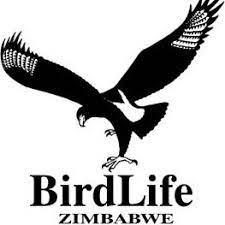IMPORTANT BIRD AREAS
Z003 Chizarira National Park
PARTIALLY PROTECTED
GLOBAL IBA (Al, A3)
17°45’S; 28°00’E
c. 91 000 ha
SITE DESCRIPTION
Chizarira National Park covers 1 910 km2 of the Zambezi Rift Valley escarpment. It is located c. 80 km southeast of the small town of Binga on the southern shore of Lake Kariba. The Park is bounded in the north, west and east by Binga, Gokwe and Manjolo Communal Lands, and in the south by the Chirisa Safari Area. It falls within Binga District and forms part of the Sebungwe Region. It is accessible by dirt roads from Binga, Gokwe and Lusulu.
The dramatic Chizarira escarpment (500 m tall) rises abruptly from the Zambezi Valley, peaks at Tundazi Mountain (1 434 m a.s.l.) and drops gradually to the Busi River (800 m a.s.l.) in the south of the Park. The escarpment is deeply dissected by gorges through which flow the Mucheni, Luzilukulu (Ruzuruhuru) and Sengwa rivers. The spectacular gorges are up to 460 m deep.
The geology varies from hard Precambrian sandstones and pebble beds (Tundazi) in the north down to Permo-Carboniferous mudstones and coal beds in the south. Along the escarpment the north-facing scree slopes are sparsely vegetated. In contrast, the gentler south-facing slopes are covered with Brachystegia glaucescens woodland. This grades into B. boehmii woodland and B spiciformis/Julbernardia globiflora woodland on deeper soils. Chizarira forms an ‘island’ of broadleaf/miombo habitat at an elevated altitude. Fire and Elephant have played a significant role in opening up the woodlands, by creating gaps, and destructively modifying large portions of the landscape. There are numerous grassy vleis, springs (e.g. Manzituba, Muchininga) and streams originating from the Park’s central watershed.
On the heavier clay soils Colophospermum mopane woodland dominates and on basalt vertisols there are ‘sidaga’ type grasslands. Combretum/Commiphora thickets (‘jesse’) occur on the sandier soils. The Busi River floodplain is covered with Faidherbia albida/ Trichilia emetica woodland and adjacent ‘jesse’ thickets. The larger perennial rivers, springs and the gorges have riparian fringing woodland and thickets. These forests contain elements of Eastern Highlands vegetation.
On the escarpment plateau, the climate is cooler and wetter than in the adjacent Zambezi Valley. Rainfall is about 600 mm p.a. and temperatures can rise to 40°C in the hot dry season. During winter the temperature drops to below zero in the river valleys, bringing occasional frost.
BIRDS
Chizarira provides a wide variety of habitats for birds and nearly 400 species are included on the unpublished checklist (S. Alexander, pers. comm.). The escarpment cliffs and gorges provide good nesting sites for the poorly known Taita Falcon Falco fasciinucha. This is one of the best sites in the world for this diminutive and specialised species. Other cliff nesters include Black Stork Ciconia nigra, Peregrine Falcon Falco peregrinus, Verreaux’s Eagle Aquila verreauxii and numerous swifts. The area is well known for its large variety of raptors, particularly Ayres’s Hawk-eagle Hieraaetus ayresii and African Crowned Eagle Stephanoaetus coronatus. The riverine forest and thickets in the gorges are a major breeding area for Narina Trogon Apaloderma narina, African Broadbill Smithornis capensis and Crested Guineafowl Guttera pucherani. Chizarira is a known regular breeding site for African Pitta Pitta angolensis. There are also regular sightings of Barred Long-tailed Cuckoo Cercococcyx montanus, another rare sub-regional species. Species of interest in the vleis in the central part of the Park are Greater Painted-snipe Rostratula benghalensis and Red-chested Flufftail Sarothrura rufa. Along the Busi River, the oxbow lakes and sandy river banks provide suitable nesting sites for a variety of swallows, martins and bee-eaters.
OTHER THREATENED/ENDEMIC WILDLIFE
Chizarira has a variety of large mammals including Elephant Loxodonta africana, Buffalo Syncerus caffer, Sable Antelope Hippotragus niger, Roan Antelope H. equinus, Tsessebe Damaliscus lunatus, and other ungulates. It was previously well known for the healthy population of Black Rhinoceros Diceros bicornis, but these are now absent through the combined effects of poaching and recent translocations to other areas.
CONSERVATION ISSUES
Although Chizarira has a high level of protection through its National Park status, there is a continual poaching threat, particularly along the east and west boundaries. The elevated numbers of Elephant have resulted in the degradation of large areas of miombo woodland, reducing the available habitat for the associated bird species. Extensive hot fires are often uncontrolled and contribute to the loss of woodland. The development of coal mines in the nearby Sengwa Coalfields will undoubtedly have an adverse effect on the Park through increased poaching and disturbance. Despite the remote location and limited access to the Park it still attracts many tourists owing to its spectacular scenery and high wilderness quality.
Globally threatened
Taita Falcon – Breeding (pairs) – 4 – 8 | Total Numbers – 10 – 20
RR & BRA | STATUS
Dickinson’s Kestrel | Uncommon
Racquet-tailed Roller | Uncommon
Whyte’s Barbet | Uncommon
Miombo Rock Thrush | Fairly Common
Arnot’s Chat | Common
Boulder Chat | Uncommon
Stierling’s Wren-warbler | Common
Miombo Tit | Common
Meves’s Starling | Common
White-bellied Sunbird | Common
Miombo Double-collared Sunbird | Abundant
Broad-tailed Paradise-whydah | Uncommon
Black-eared Seedeater | Uncommon
RR & BRA – Restricted-range and Biome-restricted Assemblage
